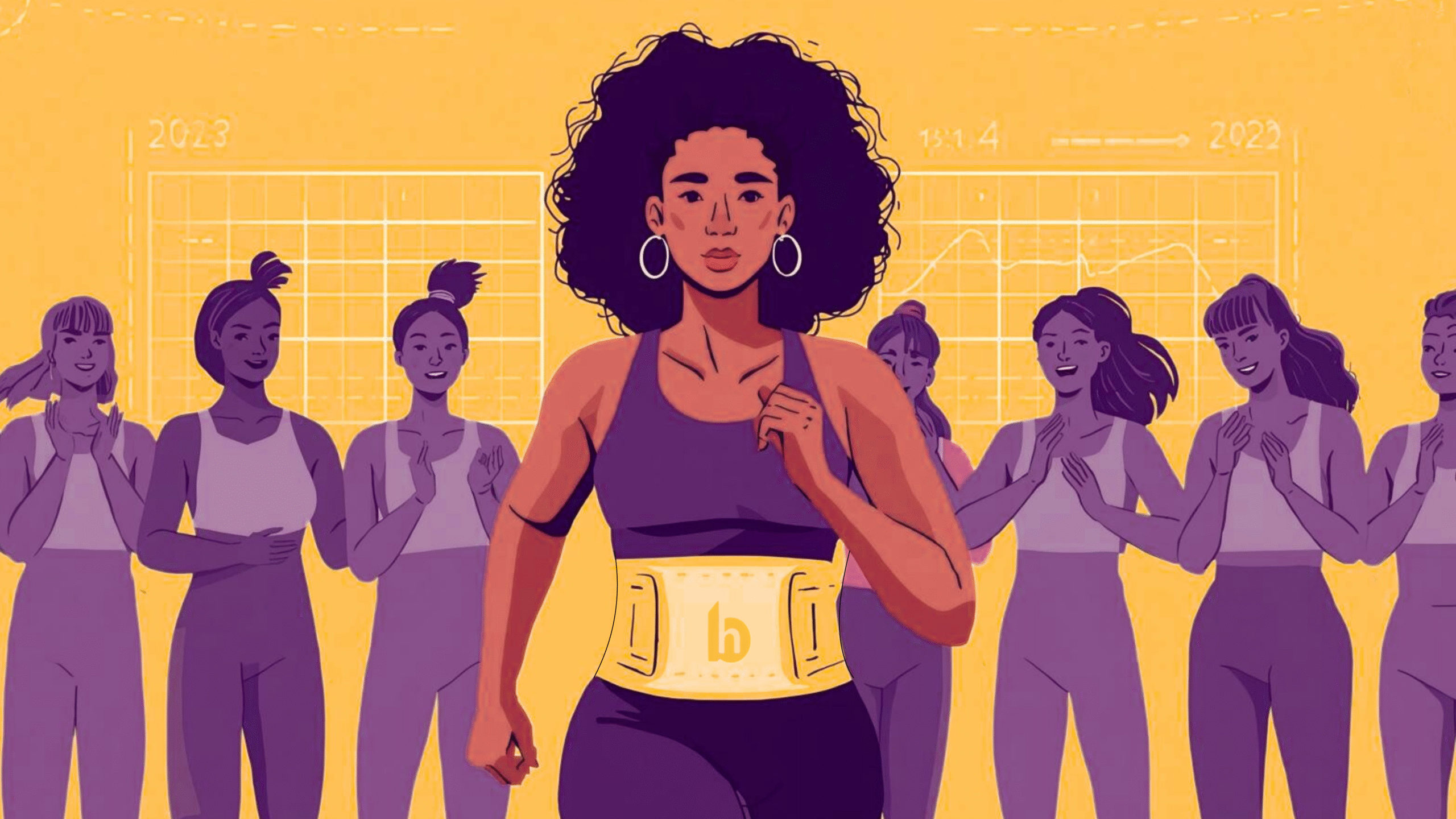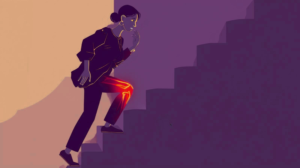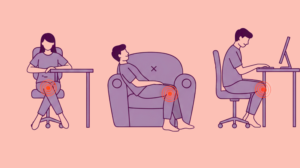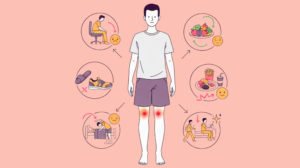Meet Alex, a marathon runner, who once could easily run through 10ks with ease. But one sunny morning, while running, a sudden sharp lower back pain stopped Alex in his tracks. The finish line suddenly seemed far away, and the once-loved shoes stayed in the closet ever since. The real problem wasn’t poor training or an old injury, it was something much simpler: years of overlooking posture during runs and workouts. years of ignoring posture during runs and workouts.
For athletes, posture often feels like an afterthought. We obsess over speed, weights, and endurance, but don’t usually give that much thought about rounded shoulders and spinal alignment. Yet, posture plays a crucial role in performance and injury recovery. And here’s where the unlikely hero, the ‘posture corrector belt‘ comes into the picture.
In this journey, we’ll learn how a posture corrector belt can support athletes in recovery, boost performance, and prevent future injuries on their comeback journey.
Why Do Athletes End Up on the Injury Bench So Often?
Posture: The Invisible Risk Factor
When people think about injuries, they often imagine ankle sprains, hamstring pulls, or torn ligaments. But poor posture quietly sets the stage for many of these issues. If your shoulders slump forward, your back muscles weaken and your chest tightens, creating imbalances that eventually strain joints. Similarly, a tilted pelvis shifts pressure onto the lower spine, setting you up for recurring back pain.
For athletes, these “silent imbalances” accumulate over months of training. Every time you run with a slouched back or lift weights with uneven shoulders, you’re reinforcing poor mechanics. A posture corrector belt, when used strategically, helps restore balance by gently aligning the spine and shoulders, reducing the risk of posture-driven injuries.
Modern Training and Postural Neglect
Athletes today focus heavily on high-intensity workouts, performance stats, and flashy routines. But many skip corrective mobility exercises and warm-ups. This neglect adds up especially when combined with hours spent hunched over phones or laptops outside of training.
Think about it: you may spend one hour in the gym but eight hours slouched at a desk. The imbalance is obvious. Poor posture outside the gym sabotages gains inside it. Tools like an adjustable posture belt bridge the gap by supporting alignment during both sedentary hours and light training, giving your body a fair chance to reset.
Can Bad Posture Really Make Injuries Worse?
From Runner’s Knee to Gym Strains
Take runner’s knee, for example. If your hips are misaligned due to poor posture, your knees bear the brunt, resulting in improper patella tracking. Or imagine doing deadlifts with a rounded spine, back strain is practically guaranteed. Athletes with bad posture unknowingly push through incorrect form, which worsens existing injuries and slows recovery.
A posture corrector belt doesn’t magically fix these issues, but it does act as a training reminder. When the belt keeps you upright, your muscles relearn better patterns, protecting you during repetitive motions like squats, sprints, or swings.
Long-Term Recovery and Posture
Even after an injury heals, posture can make or break your comeback. If your shoulders remain rounded after recovery, your range of motion remains limited, leading to compensatory movements that strain other joints. This domino effect is why re-injury rates are so high among athletes.
By promoting spinal alignment support, a posture corrector belt allows muscles and joints to heal in proper positions. Physiotherapists often recommend combining belts with stretching and strengthening for long-term results [1].
What Role Does a Posture Corrector Belt Play in Sports Injury Recovery?
Stabilization and Alignment Support
When recovering from an injury, the last thing your body needs is further instability. A posture corrector belt provides gentle stabilization, ensuring that your spine and shoulders stay aligned during daily movements or light training. Think of it as a supportive friend; firm when you need it, but not overbearing. Athletes who’ve suffered shoulder or back strains especially benefit from this external cue, since it prevents them from unconsciously slipping back into harmful postures.
Muscle Memory Training
Recovery isn’t just about healing tissue, it’s about retraining the body to move correctly. A posture corrector belt helps by reinforcing “muscle memory.” When your body gets consistent feedback about proper alignment, muscles gradually adapt to hold that position independently. Over time, this reduces dependency on the belt and improves posture naturally.
Confidence Booster During Recovery
Injuries can dent an athlete’s confidence. Every squat, sprint, or stretch comes with a shadow of fear: What if I hurt myself again? A posture support belt provides reassurance, reminding athletes that their spine is supported. That psychological lift often makes the difference between cautious, hesitant movements and a more fluid, confident comeback.
Is the Posture Corrector Belt Just for Office Workers or Can Athletes Benefit Too?
Best Posture Corrector Belt for Athletes
Unlike stiff models designed for desk workers, athletes need belts that allow mobility and breathability. Lightweight, adjustable designs (like those from BraceAbility or Copper Compression) provide enough support without restricting movement. Some even include moisture-wicking materials, perfect for light training or rehab workouts.[2]

Shoulder Brace for Posture Correction
For swimmers, throwers, or gym enthusiasts, the shoulders are frequent trouble spots. Rounded shoulders can reduce range of motion and lead to impingement injuries. A shoulder brace for posture correction pulls the shoulders back gently, opening the chest and improving scapular mechanics. Athletes recovering from shoulder injuries often combine these braces with banded exercises for faster rehab [3].
Back Support Belt for Workouts
Heavy lifters often rely on weightlifting belts for spinal stability. But for athletes recovering from injury or dealing with lingering back pain, a back support belt provides moderate compression and alignment without the rigidity of powerlifting gear. It’s less about lifting max loads and more about preventing strain during light to moderate workouts.
How Does Good Posture Improve Athletic Performance?
Breathing Efficiency & Endurance
Let’s address the fact that slouching compresses the lungs, limiting oxygen intake. Proper posture opens the chest cavity, allowing deeper, more efficient breaths. Runners, cyclists, and endurance athletes who improve posture often notice immediate boosts in stamina [4]. It’s the equivalent of switching your engine from “eco mode” to “sports mode.”
Energy Distribution & Injury Prevention
When your body is aligned, energy flows where it should. No single joint or muscle group bears excessive load, reducing the risk of overuse injuries. Imagine running a relay with teammates all doing their part, vs. one poor runner dragging the baton solo, that’s what posture does for energy distribution.
Muscle Activation and Core Strength
Good posture ensures proper muscle activation. Slouched posture leaves core muscles disengaged, shifting pressure onto the spine. Athletes with corrected posture notice better core stability, which enhances power, agility, and balance in nearly every sport.
What Do Physiotherapists and Sports Scientists Say?
Evidence-Based Insights
Research supports the connection between posture correction and injury prevention. A 2020 study found that posture correctors activate underused muscles, improving alignment and reducing pain during recovery [5]. Another review highlighted that posture-focused interventions lowered the risk of recurring musculoskeletal injuries among athletes [6].
Quotes from Sports Medicine Guidelines
The American Physical Therapy Association emphasizes that posture “forms the foundation for efficient movement and is central to preventing musculoskeletal disorders” [7]. Translation: ignore posture, and you’re building your athletic career on shaky ground.
Are There Downsides or Misconceptions About Using a Posture Corrector Belt?
Over-Reliance Concern
A common myth is that using a posture belt makes muscles “lazy.” In reality, problems only arise if you wear it excessively without engaging in corrective exercises. Physiotherapists recommend limited use, just enough to remind the body paired with active strengthening.[8]
Choosing the Wrong Type
Not all belts are created equal. Some cheap versions lack adjustability, digging into the skin or restricting movement. Athletes should invest in models designed for dynamic activity, not stiff office-focused ones.
Quick-Fix Myth
Another misconception: the belt will fix posture overnight. It won’t. Think of it as part of a recovery toolkit, not a magic wand. Lasting results come from combining the belt with stretching, mobility, and strengthening exercises.
How to Use a Posture Corrector Belt Safely During Recovery?
Gradual Introduction
Start small. Wear the belt for 15–30 minutes a day during light activity, gradually increasing to a couple of hours. Overuse can cause discomfort or dependence, while gradual introduction builds tolerance.
Combine With Corrective Exercises
Pair the belt with posture-focused workouts ; like wall angels, planks, and thoracic extensions. The belt sets the foundation, while exercises strengthen the muscles to maintain alignment without external aid.
Consult a Physiotherapist
Every injury is unique. A physiotherapist can recommend when and how to use a posture belt, ensuring it complements your rehab rather than interfering. Many pros even incorporate belts into tailored sports recovery programs.
What Other Tools Help Athletes Alongside a Posture Corrector Belt?
Foam Rollers & Mobility Bands
Foam rollers loosen tight muscles like the hip flexors, while resistance bands improve shoulder mobility. These tools restore range of motion, making posture correction easier.
Sports Taping & Shoulder Braces
Athletic taping provides temporary joint stabilization during recovery, while shoulder braces (like those from BraceAbility³) correct imbalances more directly.
Sports-Specific Rehabilitation Programs
A posture belt is most effective when combined with a sport-specific rehab plan. For instance, runners benefit from hip mobility drills, while swimmers focus on scapular stability.
What’s the Emotional Side of an Athlete’s Comeback?
Posture and Confidence Connection
Good posture doesn’t just change biomechanics, it changes how athletes feel. Standing tall boosts confidence, creating a positive feedback loop. When athletes feel confident, they move more fluidly, accelerating recovery.
Small Wins During Recovery
Recovery is slow. But little milestones, like being able to hold upright posture for a full workout, serve as mental victories. These “posture wins” keep motivation high.
Mental Resilience
Overcoming setbacks builds resilience. Athletes often say that recovery taught them patience and body awareness, lessons that posture correction naturally reinforces.
So, Can a Posture Corrector Belt Really Be the Athlete’s Comeback Ally?
Recap Evidence
Evidence suggests that posture belts improve alignment, reduce pain, and support muscle retraining when paired with proper exercises. They aren’t cure-alls but powerful allies.
Encourage Blending Posture Belts with Physiotherapy
The takeaway: don’t rely on the belt alone. Blend it with physiotherapy, corrective drills, and lifestyle changes. That’s the recipe for a true comeback.
Conclusion: Standing Tall, Running Strong
Alex’s journey from back pain to sprinting again wasn’t overnight. It was built on awareness, patience, and a little help from a posture corrector belt. For athletes, posture isn’t vanity, it’s the hidden key to performance, resilience, and injury prevention.
Remember: your next comeback doesn’t have to start with fear. With the right tools and habits, you can run taller, train smarter, and return stronger.
Frequently Asked Questions:
1. Can a posture corrector belt help in sports injury recovery?
Yes. It provides stabilization, reduces strain, and retrains muscle memory during rehab.
2. What’s the best posture corrector for athletes returning from injury?
Look for adjustable, breathable belts designed for active use, such as those by Copper Compression².
3. How does a posture support belt differ from a weightlifting belt?
A posture support belt promotes spinal alignment, while weightlifting belts focus on core bracing during heavy lifts.
4. How long should athletes wear a posture corrector belt daily?
Start with 20–30 minutes, progressing to 1–2 hours, depending on activity and comfort.
5. Can better posture really improve athletic performance?
Yes. Proper posture enhances breathing, energy distribution, and muscle activation, all of which improve performance⁴.
References:
- Hospital for Special Surgery. (2021). Do Posture Correctors Work? Expert Advice from a PT. Retrieved from https://www.hss.edu/health-library/move-better/do-posture-correctors-work
- Copper Compression. (2021). Next Generation Posture Corrector. Retrieved from https://coppercompression.com/products/copper-compression-posture-corrector
- BraceAbility. (2021). Shoulder Posture Braces. Retrieved from https://www.braceability.com/collections/shoulder-posture-braces
- Harvard Health Publishing. (2019). The Health Effects of Posture. Retrieved from https://www.health.harvard.edu/staying-healthy/the-health-effects-of-poor-posture
- Kim, M. H., et al. (2020). Effects of posture correction on pain and muscle activation in subjects with musculoskeletal disorders. Journal of Physical Therapy Science, 32(5), 321–327. https://doi.org/10.1589/jpts.32.321
- Kuo, Y. L., et al. (2019). The role of posture in musculoskeletal injury risk: A review. Sports Medicine, 49(2), 157–170. https://doi.org/10.1007/s40279-018-01072-w
- American Physical Therapy Association. (2020). How Posture Affects Your Athletic Performance. Retrieved from https://www.apta.org/patient-care/public-health-population-care/health-wellness-fitness/posture
- Holmström, E., & Moritz, U. (1992). Effects of lumbar belts on trunk muscle strength and endurance: a follow-up study of construction workers. Clinical Spine Surgery, 5(3), 260-266.https://pubmed.ncbi.nlm.nih.gov/1387822/























